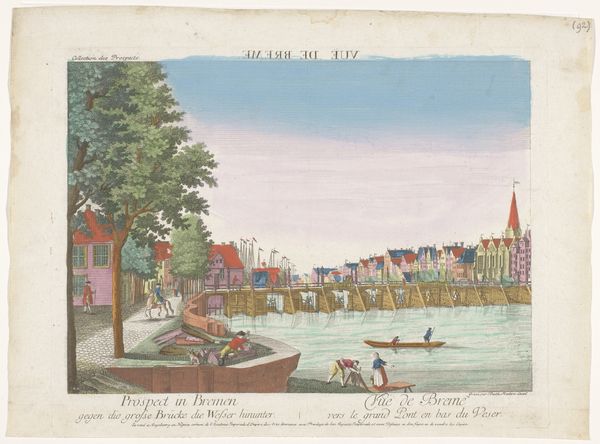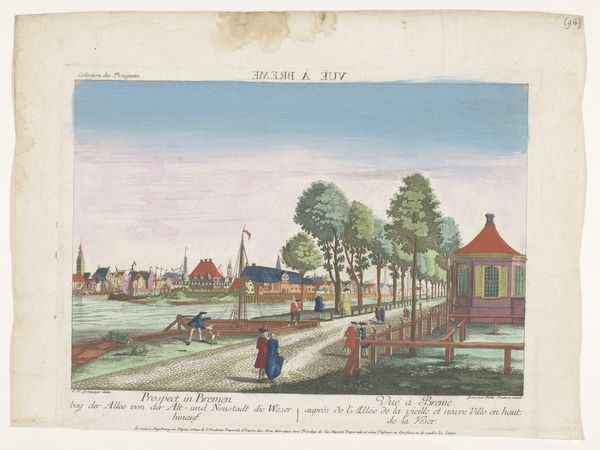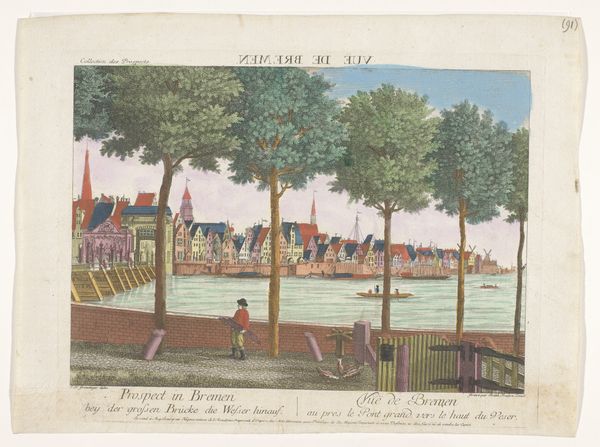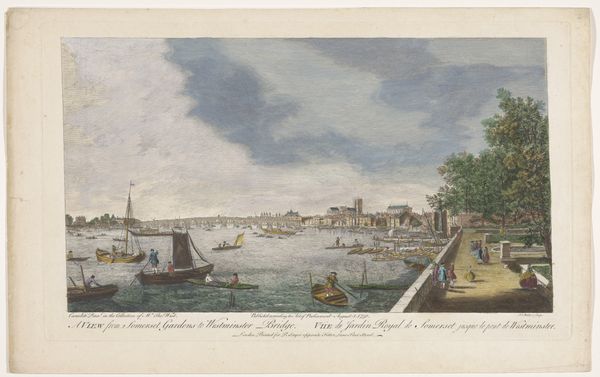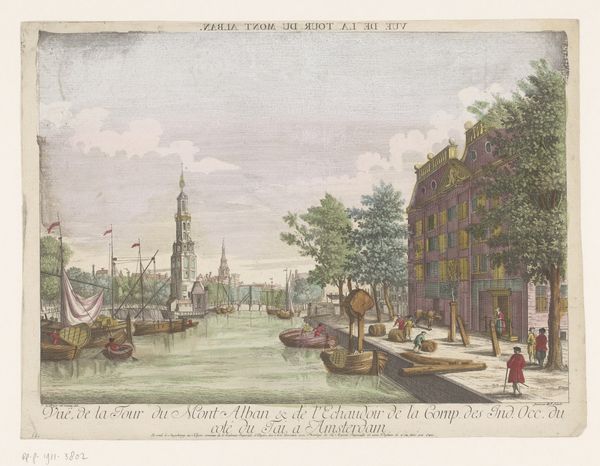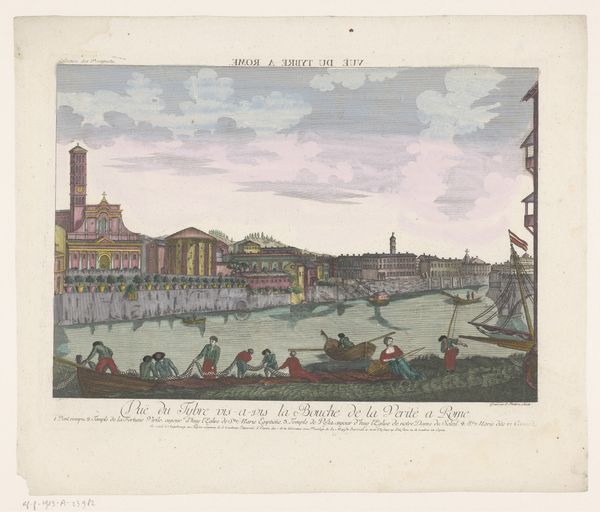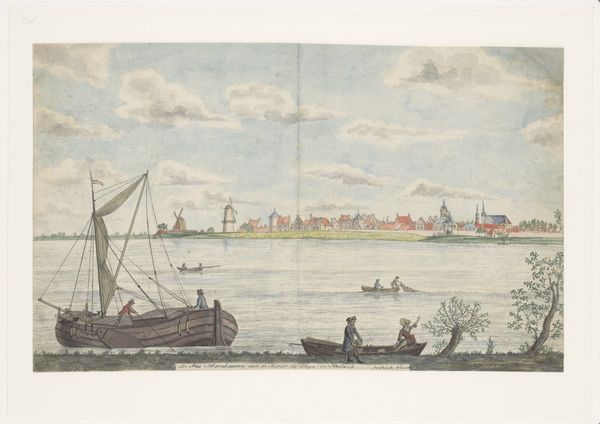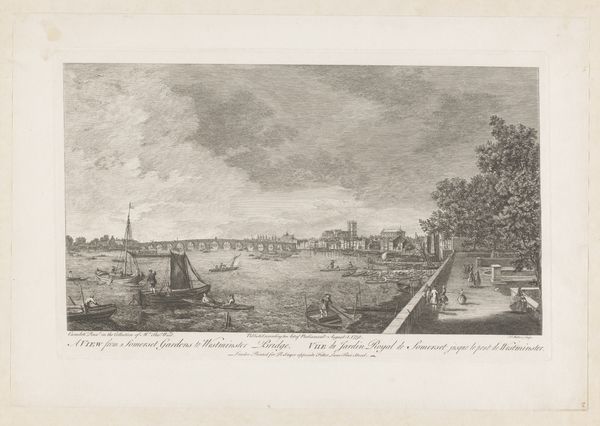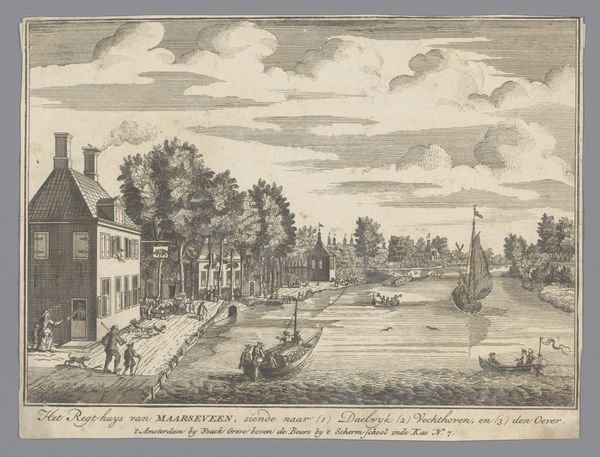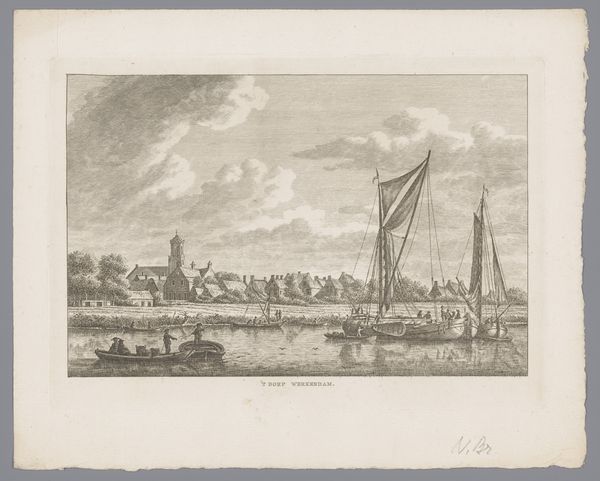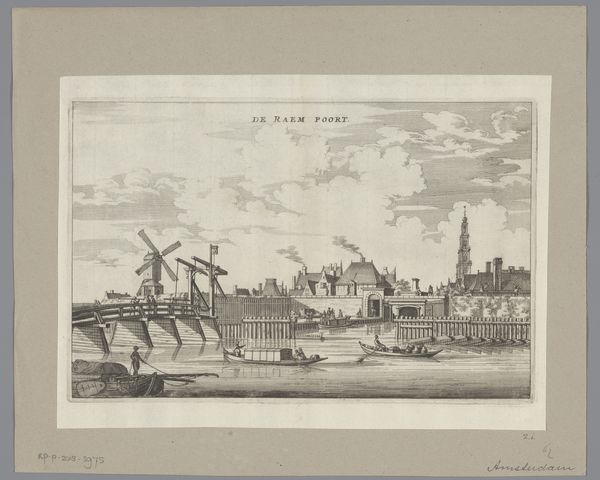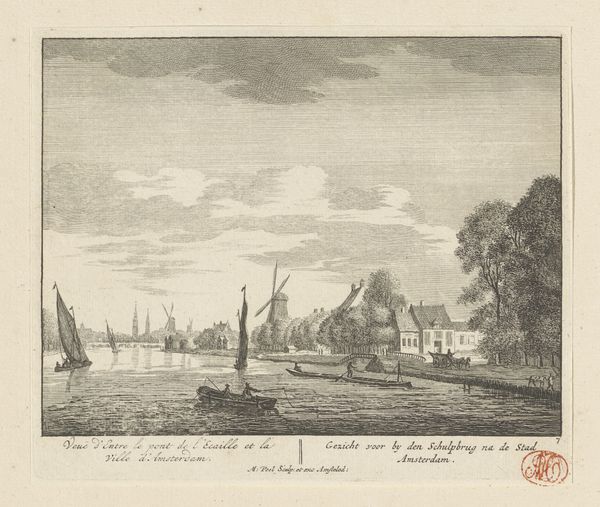
Gezicht op de stad Bremen gezien vanaf de zuidzijde 1755 - 1779
0:00
0:00
kaiserlichfranziskischeakademie
Rijksmuseum
painting, watercolor
#
water colours
#
painting
#
landscape
#
watercolor
#
coloured pencil
#
cityscape
#
genre-painting
Dimensions: height 304 mm, width 396 mm
Copyright: Rijks Museum: Open Domain
Curator: Looking at "View of the City of Bremen from the South," a watercolor painting dating between 1755 and 1779 and currently held in the Rijksmuseum, I’m immediately struck by the stillness. It feels very composed. Editor: Stillness? I see a port city teeming with laborers, fashionably dressed strollers, boats unloading... perhaps the effect you're noting speaks to a more rigid societal structure and limited mobility of the era for much of the population. Curator: Perhaps. Consider, though, that cityscapes such as these were deeply shaped by institutional forces. This isn’t just a view of Bremen; it’s a calculated depiction. We are being shown a carefully planned, prosperous image for the time, an exercise in civic boosterism, maybe? Editor: Interesting thought. For me, it evokes questions around labor and the river economy, the visible social hierarchy rendered in this piece—the division of space for leisure versus work. Do the working figures in the foreground, actively engaged with the boats on the right, hold some agency in their environment despite a lack of choice? The narrative positions these two classes in a somewhat unequal exchange, right? Curator: Precisely. The arrangement invites consideration of urban development, trade routes, and even burgeoning social stratification as byproducts. The waterway is the lifeline here—a powerful current, both literally and metaphorically shaping societal roles and mobility, or the lack thereof. And I can’t help but notice the limited visibility for female roles… Editor: Yes, it presents a very specific image of public life, obscuring the domestic sphere and female contributions. Thinking about gender and race here brings into sharper focus just who benefitted from this 'progress' and who did not. And perhaps even the role art played in perpetuating those inequities through its aesthetic depictions of society. Curator: I agree, viewing this piece through the lens of its era reveals a curated vision – not necessarily an unbiased reality. Editor: It's more of a manufactured truth that still resonates.
Comments
No comments
Be the first to comment and join the conversation on the ultimate creative platform.
